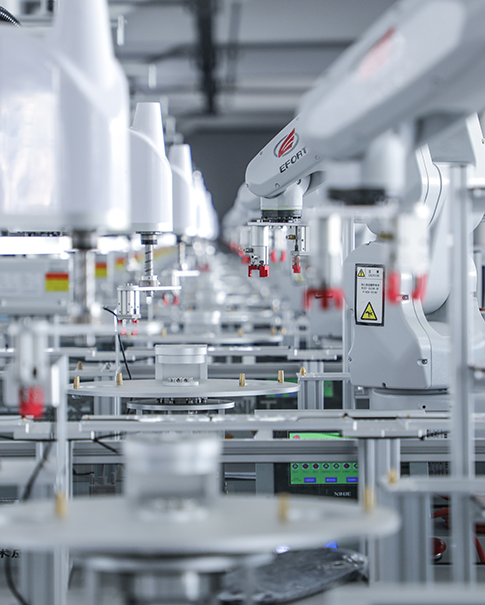As the world shifts toward sustainable energy solutions, concentrated solar power (CSP) plants have emerged as a vital component of the renewable energy landscape. At the heart of these systems lies an often-overlooked but crucial technology: high-performance heat transfer fluids. These specialized fluids serve as the lifeblood of solar thermal plants, efficiently capturing and transporting the sun's abundant energy for conversion into electricity. The groundbreaking work at Nevada Solar One, one of the world's largest solar thermal facilities, demonstrates how advanced fluid chemistry enables utility-scale renewable energy generation. This 64-megawatt facility, capable of powering approximately 45,000 homes, relies on innovative thermal oil technology to maintain optimal performance in the harsh Nevada desert environment.
Modern CSP plants utilize sophisticated heat transfer fluids that must meet exceptionally demanding specifications. These fluids must:
Maintain stability at temperatures exceeding 400°C
Resist thermal degradation over thousands of heating cycles
Provide excellent heat transfer characteristics
Remain chemically stable under intense solar radiation
The DOWTHERM™ A fluid used at Nevada Solar One represents a carefully engineered solution combining biphenyl and diphenyl oxide. This formulation delivers exceptional high-temperature performance while minimizing maintenance requirements. The fluid circulates through an extensive network of specially coated receiver tubes, absorbing thermal energy from concentrated sunlight before transferring it to the plant's steam generation system. What makes these fluids truly remarkable is their ability to maintain performance over decades of continuous operation. Unlike conventional thermal oils that might degrade rapidly under such conditions, advanced formulations can deliver reliable service for the entire lifespan of a solar facility—often 25 years or more.
The successful operation of megawatt-scale solar thermal plants requires overcoming significant engineering hurdles, particularly in fluid handling and logistics. The Nevada Solar One project presented several unique challenges that highlight the complexity of renewable energy infrastructure:
1. Massive Volume Requirements
The plant required millions of dollars worth of thermal fluid to fill its extensive network of receiver tubes. Supplying this quantity demanded precise coordination between manufacturing, transportation, and installation teams.
2. Temperature-Sensitive Logistics
The heat transfer fluid had to be transported at a maintained temperature of 130°F (54°C) to ensure proper viscosity and prevent solidification. Seventy-two specialized ISO containers were deployed in a carefully orchestrated delivery operation completed in just five days.
3. Precision Installation
Each of the 19,300 four-meter receiver tubes had to be carefully filled and integrated into the system without contamination or thermal shock. This required innovative filling procedures and rigorous quality control measures. These challenges underscore why few companies possess the technical expertise and infrastructure to support utility-scale solar thermal projects. The successful deployment at Nevada Solar One demonstrated that these obstacles could be overcome through careful planning and advanced engineering solutions.
The adoption of high-performance heat transfer fluids in solar applications delivers substantial benefits:
1. Enhanced Energy Efficiency
Modern thermal fluids can operate at higher temperatures than earlier formulations, improving the thermodynamic efficiency of the entire power plant. This means more electricity generated from the same amount of sunlight.
2. Reduced Maintenance Costs
The exceptional stability of advanced fluids minimizes degradation products that can foul heat exchangers and other critical components. This translates to lower operating costs and increased plant availability.
3. Extended Equipment Life
By reducing thermal stress on system components, these fluids help extend the operational lifespan of expensive solar field infrastructure.
4. Enabling Energy Storage
Some next-generation thermal fluids are being developed to work with molten salt storage systems, allowing solar plants to generate electricity even when the sun isn't shining. The economic case for these technologies becomes even stronger when considering state renewable portfolio standards. With Nevada mandating that 5% of electricity come from solar sources by 2015 (a target that has since been exceeded), reliable thermal fluid systems become essential for utilities to meet regulatory requirements cost-effectively.
The success of Nevada Solar One paved the way for continued innovation in CSP technology. Current research focuses on several exciting developments:
1. Higher Temperature Fluids
New formulations capable of operating above 500°C could dramatically improve power cycle efficiency and reduce electricity costs.
2. Hybrid Systems
Combining thermal fluids with photovoltaic technology may enable hybrid plants that generate electricity through multiple conversion pathways.
3. Advanced Materials
Nano-enhanced fluids and novel receiver coatings promise to push the boundaries of solar thermal performance.
4. Global Expansion
The logistical capabilities demonstrated in Nevada are now being applied to solar projects worldwide, from Spain's Andasol complex to emerging markets in the Middle East and North Africa.
The story of Nevada Solar One illustrates how materials science innovation plays a critical role in the renewable energy revolution. While solar panels capture public attention, it's often the unsung technologies like advanced heat transfer fluids that make large-scale renewable power generation possible. As nations worldwide commit to ambitious decarbonization goals, the demand for reliable, high-performance thermal fluids will only grow. The lessons learned from pioneering projects like Nevada Solar One continue to inform the design of next-generation CSP plants that will help power our sustainable future. For energy professionals and policymakers, the key takeaway is clear: investing in advanced thermal fluid technology isn't just about improving individual components—it's about enabling the entire renewable energy ecosystem to operate more efficiently, reliably, and cost-effectively. As we look to build the clean energy infrastructure of tomorrow, these innovative solutions will remain essential tools in our fight against climate change.
 Network Supported
Network Supported